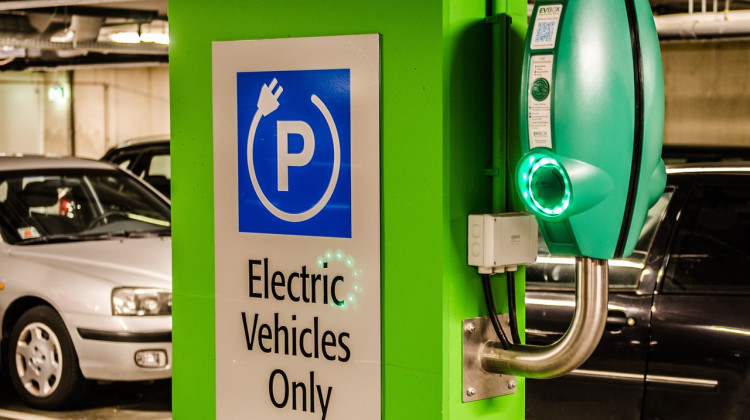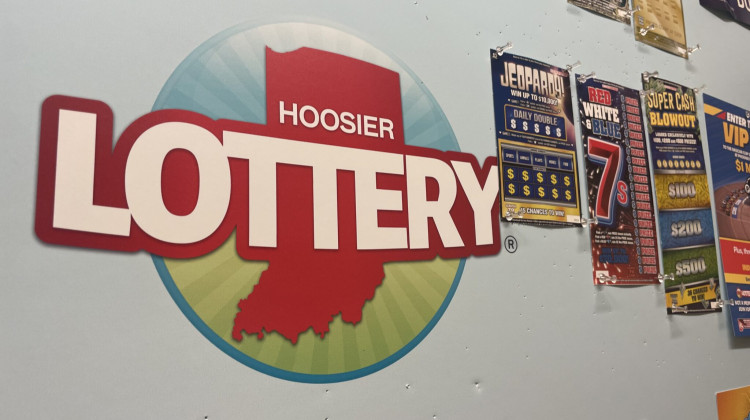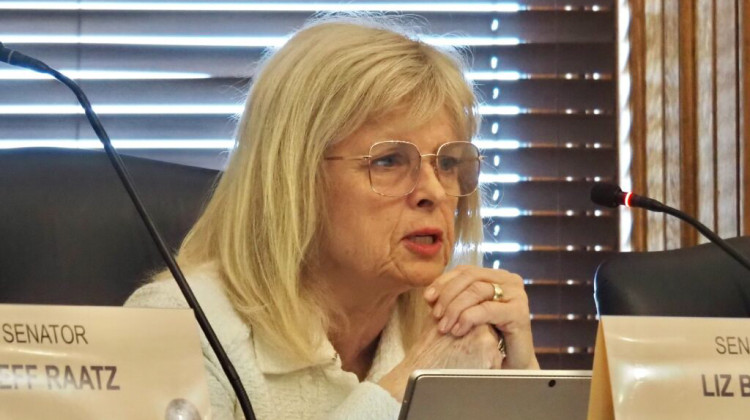
Leaders in the electric vehicle industry discussed the future of clean energy and transportation at a conference on Tuesday.
PixabayLeaders in the electric vehicle industry discussed the future of clean energy and transportation at a conference on Tuesday. Stakeholders shared statistics about the current state of EV infrastructure — including charging stations and electric vehicle production – and discussed equity concerns, and cooperation between utilities and electric companies.
What is the state of EV infrastructure in Indiana?
Julie Kempf is with the Indiana Office of Energy Development. She said the amount of electrical vehicles on the roads nationally has more than tripled since 2019.
“In 2019, there were approximately 230,000 battery EVs on the roadway and today there are over 762,000,” she said.
For Hoosiers, Kempf said the state is working to increase driver security in placing chargers in certain locations.
“The state wants to ensure that there's adequate infrastructure in place for the owners to be able to find and access operational charging stations across the state,” she said.
Kempf said the Indiana Economic Development Corporation is also helping develop this infrastructure by providing staffing and the Indiana Utility Regulatory Commission is establishing pilot programs to test how EVs and utilities can coordinate.
Shawn Seals, with the Indiana Department of Environmental Management, said a percentage of Indiana’s electric vehicle access expansion was funded by the Volkswagen Environmental Mitigation Trust – a multi-billion-dollar settlement which allotted funding to states to offset emissions that violated federal law.
“What we ultimately did was we awarded the $5.5 million to what was referred to as the Indiana Utility Group for the installation of no less than 61 fast charging stations across the state, 61 stations for $5.5 million,” he said.
Seals said this has created a nice spread of charging stations throughout the state – many of which are currently up and running. However, he said there are some gaps in state-provided charging stations. This includes Terre Haute and Lafayette, which have charging station investment through another Volkswagen program called Electrify America.
What is funding this EV expansion?
The National Electric Vehicle Infrastructure Formula Program, or NEVI, is a federal program that provides states with funds for EV infrastructure. Some federal and state officials have called this program the “backbone” of Indiana’s electric vehicle funding.
Peter Flynn is with HNTB, a company focusing on infrastructure. He said EV charging stations through this program include a focus on interstate highways and state designated corridors.
“Many of the states [charging stations] you'll see are located along the interstate highways,” he said. “In addition to those, there are specific in the electric vehicle corridors of the states. Those are formalized and adopted.”
The charging stations must also be every 50 miles along those interstates and corridors and must be within one mile of the highways.
Flynn said he expects “qualification-based applications” to be a “key driver” in the process of awarding the grant money.
Application considerations may include things such as the equipment’s proximity to amenities, equipment readiness, and equity workforce and economic development prospects.
READ MORE: Alliance to Buttigieg: Reject Indiana's inequitable electric vehicle plan
Join the conversation and sign up for the Indiana Two-Way. Text "Indiana" to 73224. Your comments and questions in response to our weekly text help us find the answers you need on statewide issues, including this series on climate change and solutions.
The cost share for NEVI applicants will be 80 percent federal and 20 percent from the applicant.
Kempf said private investment by companies such as Samsung and the building of the next EV battery-making factory in the state also increases the role and financial resources Indiana has in the future of electric vehicles.
“So Indiana doesn't want to just observe the transition and, as most manufacturing intensive state per capita in the country, we also want to build that automotive future,” she said.
Equity, location concerns persist
Some environmental justice advocates expressed concerns throughout the conference about equity and locations of these charging stations.
Questions on whether these EV investments are equitable have continued since the state released draft plans for EV charging stations.
Denise Abdul-Rahman is the environmental climate justice chair for the Indiana NAACP.
She expressed concerns about the presence of these charging stations in disadvantaged areas.
“That item does have some accountability in environmental justice communities that primarily live near highways with air pollution, and therefore perhaps more of a commitment of both Volkswagen mitigation funds benefiting those communities,” Abdul-Rahman said.
She followed by asking whether there was a way or effort to quantify investments made in environmental justice communities relating to Volkswagen litigation.
Seals said this is certainly “doable” but explained he feels there is a focus on environmental justice in many of the existing EV charging stations.
“There are a lot of green dots in northwest Indiana, and that's not accidental,” he said, referencing a map of where state-funded charging stations are located in Indiana. “I believe our utility partners definitely had some vision and some focus on that as well.”
Scott Manning is with the Indiana Department of Transportation. He said the state is committed to conversations about equitable EV charging solutions.
“We’ve looked at the proximity of the charging stations themselves to disadvantaged communities and being able to specifically bring that infrastructure to communities that have been historically overburdened or historically have seen underinvestment in large scale transportation projects,” he said.
In federal update presentations, Abdul-Rahman brought up some of the same concerns, and asked if funds can be withheld from states for not ensuring equity in EV access.
“Will the federal government actually withhold funds if the state isn’t being that equitable or is just going to continue to distribute funding regardless of whether or not all groups of people are included in this major billion-dollar-transition that's happening across the nation?” she said.
Shelbi Small is with the U.S. Department of Transportation. She said there is not a specific accountability metric at the moment, but that this effort will continue on for years to come and there is always room for improvement and building relationships to ensure this equity.
“These relationships aren't just for today. They're not for tomorrow. They're not for next year. They're for the foreseeable future,” Small said.
Small said that more specific state-by-state program updates are expected to come out in the coming weeks as well.
Violet is our daily news reporter. Contact her at vcomberwilen@wfyi.org or follow her on Twitter at @ComberWilen.
9(MDAyMzk1MzA4MDE2MjY3OTY1MjM5ZDJjYQ000))
 DONATE
DONATE






 Support WFYI. We can't do it without you.
Support WFYI. We can't do it without you.